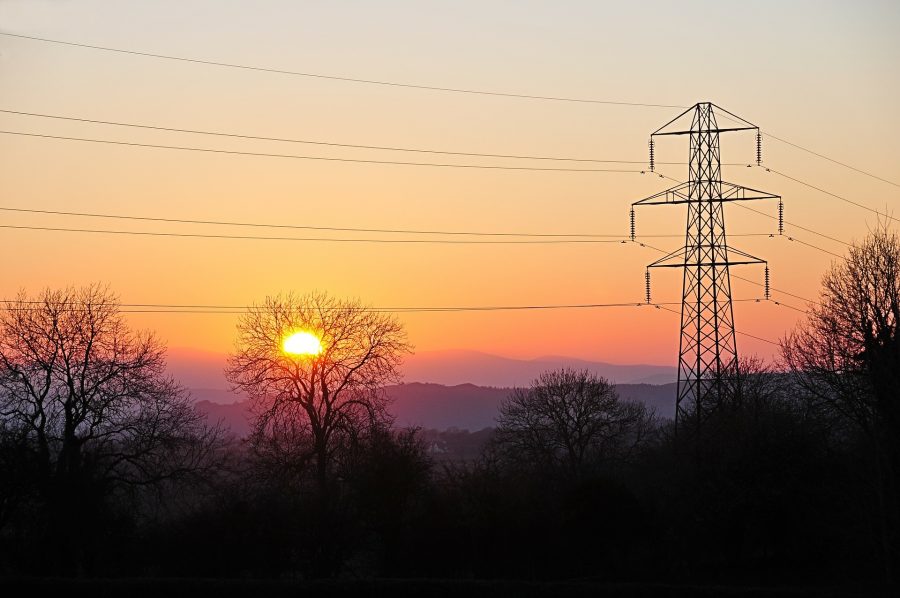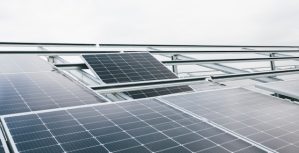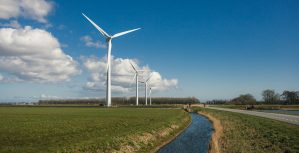Power Grid: how to increase reliability and reduce wildlife-related fire risk
The impact of wildlife on power grid assets can be minimised by strategically installing insulation barriers and components. Adverse effects of costly power outages and wildfires will be cut down if these insulation components and barriers are correctly specified. When correctly installed, insulation components can be effective for up to 40 years.
One of the leading causes of localised fires is the interference of high-voltage overhead power lines and substations by wildlife. In most cases, the localised fires can spread to the environment below the power lines and around the substations. Uncontrolled wildfires are one of the biggest causes of damage to electric utilities and power distribution systems around the world.
Here are some of the most common incidences that might result in wildfires.
• Wildlife-related activities such as ignited nesting materials and electrocuted birds falling on vegetation below. Once the dry material below the pole or lines come into contact with ignited material or an electrocuted bird, fire is likely to occur and spread uncontrollably.
• When uninsulated live wires clash with vegetation, the electric charges might cause a wildfire that damages electric utilities nearby.
• When two conductors come in contact with each other, sparks are produced. These sparks result in a fire when they fall on vegetation near the point of contact.
• When environmental pollutants pile up on an insulated component, they might act as conductors for current to flow through. This increases the risk of arcing and flame tracking.
Power outages caused by wildlife-related fires are classified into two types. However, both types of outages can be controlled by the installation of TE Connectivity (TE) Wildlife Asset Protection (WAP) solutions. WAP solutions include insulating covers and barriers used to mitigate the risk of fires caused by wildlife interference. These covers and barriers are usually installed in overhead high-voltage distribution lines and substations in areas with uncontrolled wildlife activities.
The two types of outages caused by wildfires are;
• Phase-to-earth faults. These are caused when wildlife debris piles up on insulated electric utilities. The debris then forms a conductive path that passes electricity between the power grid utility and the ground.
• Phase-to-phase faults. These occur when molten metal particles fall on dry material on the ground. When two phases collide, the high temperature at the point of connection causes the conductors to melt. Often, the movement of wildlife or debris causes collisions.
The selection of materials used for Wildlife Asset Protection is very important. They should meet the required efficiency standards to guarantee the best results. Insulation materials should be made from well-formulated polymers to guarantee durability and fire resistance.
Here is a detailed discussion on the selection of effective materials for Wildlife and Asset Protection (WAP)
The Business case for installation of appropriate upgrades for Wildlife and Asset Protection
Although the investment in WAP solutions is deemed reactionary, it plays a vital role in ensuring the reliability of the network. Wildlife and Asset Protection not only prevents damage to electric utilities but also guarantees safety to wildlife.
Here are some catastrophic implications of having electric utilities without the necessary protection.
• Severe injuries and loss of life: When wildlife or people are exposed to live conductors, they might be electrocuted. If the exposed phase carries heavy current, the issue can be fatal. Wildfires that arise due to phase collision lead to extensive destruction of forest cover and wild animals.
• Damage and loss of power grid assets: High-voltage distribution lines and substations might be damaged in case of a fire. The cost of replacing and repairing damaged assets is usually very high.
• Service interruptions and power outages: Essential institutions, such as hospitals, and industries, rely on electricity. When an outage occurs due to wildlife interference, their activities are jeopardised.
• Environmental hazards: Wildfires caused by disruption of power grid assets by wildlife are destructive. The fires destroy forest covers exposing the environment to possibilities of soil erosion. The burning vegetative material produces a lot of carbon that contributes to global warming..
• Regulatory repercussions: When wildfires spread to personal properties, especially in agricultural and horticultural areas, power companies might be subjected to fines and compensation claims.
The choice of Wildlife and Asset Protection is determined by the nature of the power grid asset and the challenges encountered within the area in question. The cost of installing these preventive solutions is lower than repairs and replacements to damaged power grid assets.
Material Considerations for Wildlife and Asset Protection (WAP) components
Engineered polymers offer different types of protection and levels of fire prevention. When selecting polymers for WAP, strict considerations should be made regarding the type of power grid asset in question and its exposure to certain climatic conditions.
Poorly manufactured polymers face gradual wear and tear when used in high-voltage overhead power lines. The wear and tear are due to pollution, heat generated by the current, and effects of Ultraviolet radiation.
Here are key considerations when selecting WAP materials.
Tracking and erosion resistance (TERT)
Tracking and erosion resistance, TERT, refers to the material’s ability to withstand surface arcing and ignition when subjected to an environment with high-stress levels. Materials with low TERT tend to present a higher risk of gradual degradation, which leads to insulation breakdown and increased spark production as well as flame propagation.
The TERT of a material is tested by the ASTM D2303 abrasion test method or the Step Method. Good insulation material can withstand for a longer time the STEP TERT using the abrasion method during the test.
Ultraviolet (UV) resistance
UV resistance is the measure of a polymers’ ability to withstand the effects of being exposed to sunlight for a long time. The test is usually done for polymers used to make Wildlife and Asset Protection for outdoor power grid assets. Polymers with low UV resistance tend to degrade over time. The degradation increases chances of arcing, tracking, and ignition.
Methods of testing UV resistance include the ASTM G154, Cycle3, and UV-3. The UV-3 method is done for a minimum of 1000 hours. However, for a safety guarantee, the tests should be done for more than 5,000 hours.
Thermal Resistance
The thermal resistance of a polymeric formula is its ability to retain its mechanical integrity when subjected to elevated temperatures. It also implies the ability of a polymer to resist melting and deforming due to increased temperatures. The ability of a polymer to resist melting prevents the possibility of fire since molten hot plastic tends to drip on the vegetation below.
Two tests are used to determine the thermal conductivity of a polymer.
These are;
– Thermal Index IEC 60216/IEEE 98 at 105°C. This method tests materials thermal resistance for 20,000 hours.
– Thermal Aging ASTM D2671 750 hours at 105°C. This is the most effective thermal resistance test. The method tests the suitability of a material to a serviceability period of over thirty years.
A Better Testing Method
A power-arc testing method is used to demonstrate the essential requirements of the material. The requirements are TERT, Ultraviolet resistance, and thermal resistance. The power-arc testing method is recommended by IEEE 1656. The test simulates the extreme conditions of a power-arc in service. This test involves subjecting the component to high voltage, high energy, high temperatures, and hot gases in a short period.
These conditions occurring within a short time represent scenarios that could abruptly challenge specific properties of a polymer. An example of such scenarios is lightning. The test is considered successful if the WAP component remains intact after exposure to the conditions.
It is key for Utilities to partner with experienced vendors to safeguard overhead lines and substations from unplanned outages and fires caused by wildlife. They can help in risk assessment and developing strategic plans to replace and upgrade the most volatile components and ensure insulation throughout the entire system. Partnerships between Utility owners and trusted experts in different fields such as electrical and mechanical component design and material science reduce wildlife-related fires and minimise power outages.
Share It on :





